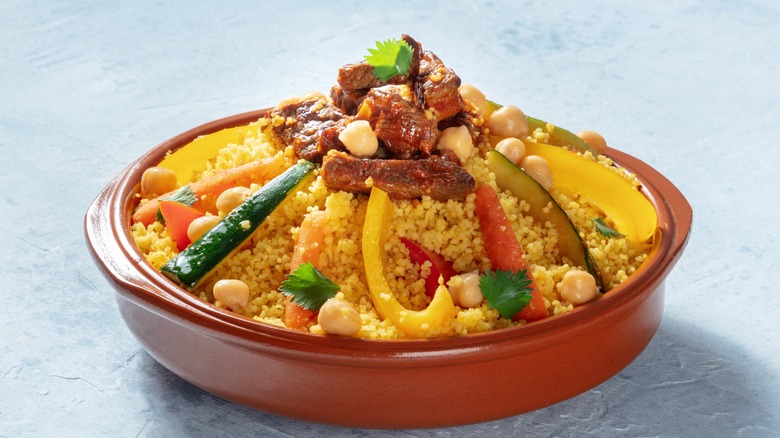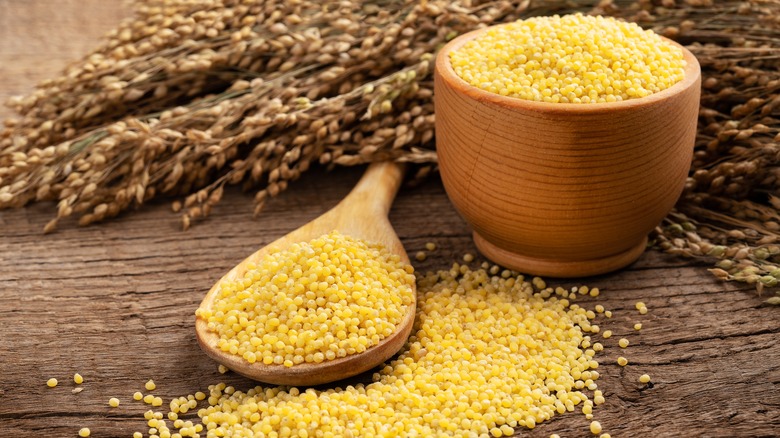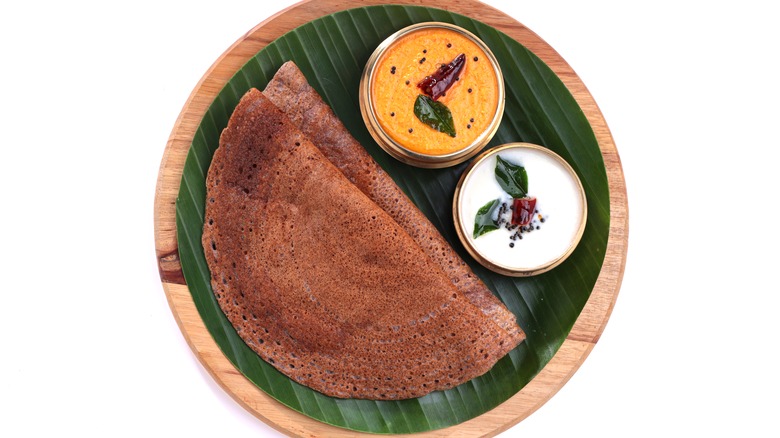You Should Be Cooking More Millet. Here's Why
Millet isn't the first side dish most people think about when looking to accompany their dinner entrées or morning breakfasts. In fact, it's more widely known as an ingredient in bird feed. But millet is much more than something to spread in the backyard for your avian friends. Though technically a seed, millet is considered one of the ancient grains, and is grown in parts of Asia and Africa, according to Healthline. It's a sustainable plant that grows easily and is pest and drought resistant, but that's not the only reason it makes a great alternative to rice or polenta. It's also a nutrient powerhouse, and stores well in your pantry or cupboard.
With a mild, slightly sweet corn flavor, millet is adaptable, too. It's subtle enough in its flavor that, like rice, it can soak up the flavors with which it is being cooked, reports The Healthy. Its fluffy texture, mild flavor, and ease of preparation are just the beginning, though.
One grain, many uses
Millet's work as a side dish is only part of its repertoire. It can be prepared as a porridge for breakfast by simply toasting it in a pan, and then running it through a coffee grinder or mortar and pestle and cooking it in boiling water with other ingredients, according to Very Well Fit, or made into fritters, mixing in other vegetables or proteins as well. You can even buy it in puffed form and serve it as a cereal with whatever milk you choose, or like this meal from Craving California, add it to homemade granola.
As a side-dish, however, it's a veritable workhorse. Since it has a habit of soaking up flavors around it, its versatility shines in everything from sitting alongside steak and chicken, to adding unique texture and taste to salads, according to Pure Wow. It's also a great stuffing for things like squash, and it sits very nicely with an Asian stir-fry, or simply try it in place of rice with whatever you're serving.
Pearl millet is the most common of several varieties available to shoppers, according to Minimalist Baker. It's yellow, almost corn-colored, and is available in resealable bags in the same place you'll find other grains like quinoa, couscous, or rice. There are other versions available such as foxtail, kodo, little, and proso, but they share similar qualities in both taste and nutrition, according to Smart Food.
A Nutritional Powerhouse
Speaking of nutrition, millet boasts a host of health benefits. It is gluten-free, for starters, and has as much as 6 grams of protein in a one-cup serving. It also has 2.2 grams of fiber, and even a slight bit (1.7 grams) of fat. It contains amino acids, which aid in muscle and tissue building. The list continues with magnesium, folate, iron, phosphorous, and the highest level of calcium of all grains, with 13% of the daily value in one cup, according to Healthline.
For pure health benefits, millet is good for cardiovascular health since it is so high in fiber, contains Vitamin B3 and can reduce high levels of cholesterol and triglycerides, says Medical News Today. Those with diabetes can also benefit from eating millet because it doesn't spike blood sugar and has a low glycemic index.
Millet's versatility, the adaptation of textures and flavors, and its superfood-like nutritional qualities are all enough to invite at least a second look. If you're in need of a rice replacement, a unique breakfast, or even a side dish that delivers a nutritional punch, grab a bag and cook up something new.


